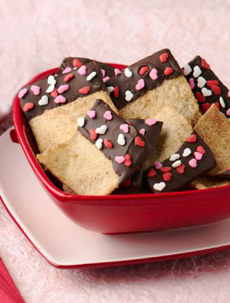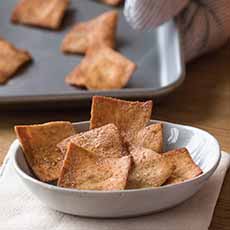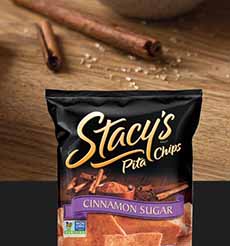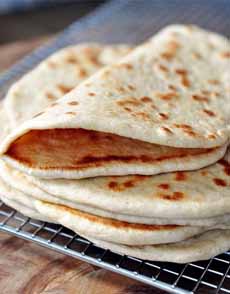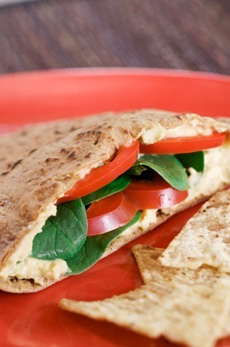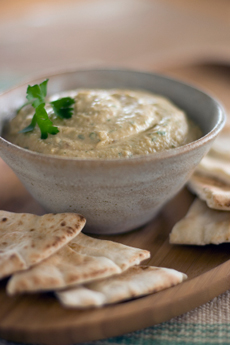FOOD FUN: Valentine Pita Chips Recipe & The History Of Pita
|
Stacy’s Pita Chips made these Valentine chips with their Cinnamon-Sugar Pita Chips. If you like the idea (and how can you not), you can use the same recipe, substituting graham crackers, shortbread or sugar cookies. You can buy Valentine-themed decorations on Amazon, at Wilton, or at baking supply stores and craft shops. We suggest making at least two bags’ worth: These will go fast. They pair well with: > The history of pita is below. > The different types of bread: a photo glossary. Ingredients 1. LINE a tray or baking sheet with wax paper or parchment. 2. MELT the chocolate in a shallow microwavable bowl for 30 seconds; stir and continue to microwave and stir at 30-second intervals. Take care not to scorch the chocolate. If there’s just a slight amount of undissolved chocolate, for example, whisk it to melt it instead of overheating the chocolate. 3. DIP half of the pita chips into the chocolate and place on the waxed paper or parchment. 4. SPRINKLE with the decorations and allow the chocolate to set (you can do this on the counter or by putting the tray in the fridge). 5. STORE in an airtight tin. Rounds of pita bread, made from wheat, have been a staple of Middle East cuisine for 4,000 years. But its roots go way back to the prehistoric flatbreads of the Middle East. There is evidence that around 14,500 years ago, during the Stone Age, people in what is now Jordan made a kind of flatbread from wild cereal grains [source]. Archeologists believe that pita we know originated west of the Mediterranean, possibly invented by the Amorites or the Bedouins. Both farmers and desert nomads made pita, and its popularity spread as the nomadic Bedouins traveled and traded across the Arabian and Sahara deserts. Throughout the Eastern Mediterranean and Greece, pita has also been used as a utensil, a plate and a scoop; a vehicle to pack, dip or wrap foods such as beef, chicken, falafel and lamb. In Greece, pita is an essential component of souvlaki, a popular street food consisting of small cubes of meat (and sometimes vegetables) that are grilled on a skewer and often served fried potatoes, lemon and sauces. Pita is also served with Middle Eastern mezze, such as baba ganoush, hummus, tabouleh (tabbouleh, tabouli, taboula) and tzatziki. Originally, pita dough was let to sit in the air to collect naturally occurring lactobacilli bacteria and wild yeasts, which created a low rise†. (Cultivated yeast was not available until the 19th century). As technology advanced, pitas could be cooked at high temperatures (800°-900°F). The steam produced made the flat dough expand, forming an interior pocket. Many traditional cultures continue to use pita more like a soft taco to fold and hold food—whether the pocket style (photo #5) or pocketless pita (photo #4 [source]). Today, in the U.S., pita is available with and without pockets. The pockets are particularly attractive for sandwiches (photo #5). In fact, whole wheat pita was created to meet the demand for healthier foods. Flavored varieties like garlic pita are also available. In addition to sandwiches and wraps, pita is also cut into wedges and eaten soft or toasted. And in the case of Stacy’s Pita Chips, pita is cut into chip sizes baked twice, for a perfect crunch. *While meat grilled on skewers is an ancient cooking technique, modern souvlaki became popular in Greece after World War II. |
|
|
|
|
||
